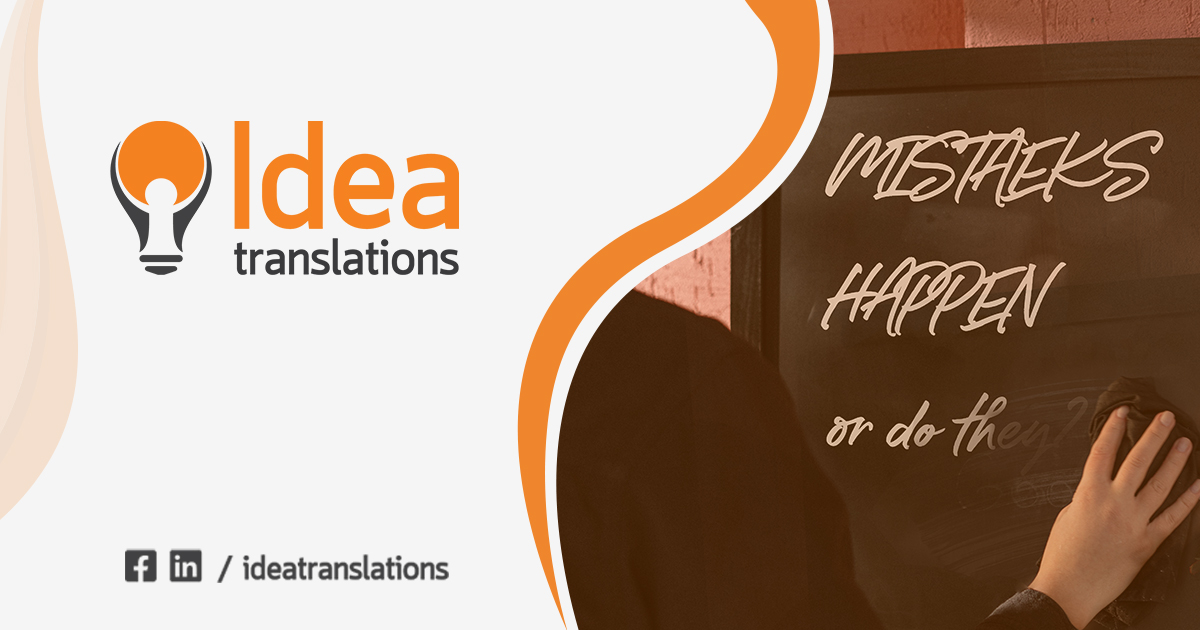
Five Common Translation Mistakes and How to Avoid Them
Translating requires a broad knowledge of linguistic systems, and a deep understanding of the content at hand.
It is not uncommon for mistakes to occur, because a professional translation requires much more than simply changing words for their equivalent in the target language: we need to analyze and interpret the context and the variations of each term and their intricacies.
These common mistakes can pop up both in complex projects —such as a learning manual or a scientific paper— and in subtitles and dubbing. How can we avoid them?
After analyzing two seasons of a Netflix show with Spanish subtitles, more than 40 translation errors were found. Among them, 26.7% were errors in meaning, 33.3% were undertranslations, 22.2% were omissions and 17.8% were overtranslations.
Source: Universidad Ricardo Palma de Perú
Common Mistakes
There are several errors that translators need to be on the lookout for, so as to be able to identify and avoid them.
❶ Omission: Trying not to be redundant, some translators may get away with some words. However, not including some key terms may render the text unintelligible, particularly when dealing with complex content.
❷ Literal Translation: This is a frequent failure that consists of translating every single word, overlooking grammatical differences between the languages.
For example: the literal translation of the Spanish “declarar culpable” would be “to declare guilty”, while “to find guilty” would be a much more natural and correct choice. The same happens with syntax. Some languages, like English or Turkish, carry adjectives before nouns, while Spanish carries them after.
❸ False Friends: Fundación del Español Urgente (Fundéu), one of the most important sources on the Spanish language, defines a false friend as “a word or expression in a foreign language that takes a similar form to a word in the source language, but a different meaning. Therefore, the meaning of these words is easily confused.”
For example, translating “actually” as “actualmente”, when the correct meaning would be “realmente”. Likewise, in French, the word “adopter” should be translated as “approving” or “accepting” and not as “adopting”.
❹ Undertranslation and Overtranslation: These are two sides of the same coin. Undertranslation is similar to omission, it means conveying less than the source or oversimplifying, without considering the need to compensate the loss in meaning that occurs naturally with any translation. Overtranslation is adding something that was not present in the source text. The risk is to “make the author say things that they never meant to say, even things that they tried very hard not to say”, explains translator Enrique Bernárdez, from Instituto Cervantes.
❺ Ignoring Measurement Units: This is a very common pitfall. In the US and the UK, for example, units of distance are miles, while other countries use kilometers. Similarly, the target audience may not know how many grams are in a pound or how many centimeters are in an inch.
It is crucial to be aware of the preferences of the target audience and make all necessary conversions in measurement units. Sometimes, these errors can be critical: in 1999, NASA technicians failed to carry out an accurate conversion and the “Mars Climate” probe crashed.
Another example: “un billón” in Spanish is not equivalent to “a billion” in American English. One billion –in American English– is 1,000,000,000, which would be “mil millones” in Spanish. “Un billón” in Spanish is 1,000,000,000,000.
In a healthcare setting, Google Translate errors can result in 2% of severe clinical damage in Spanish-speaking patients, and 8% in Chinese-speaking patients.
Source: University of California-San Francisco
Make Quality part of your Brand
One of the ways to prevent these errors is to take a holistic approach to translations. To this end, we need to work on the content not only with a language specialist, but also with subject matter experts. A scientific paper, for instance, can be translated from a linguistic perspective to achieve correct grammar and syntax, but it also needs to be analyzed from a scientific point of view. Thus, the translation will be effective in both complexity and context.
Holistic translation services work with a pool of experts in different fields, which ensures precision and add value to each project. When we are dealing with complex material, using the best tools and services is the only way to ensure an accurate translation.



